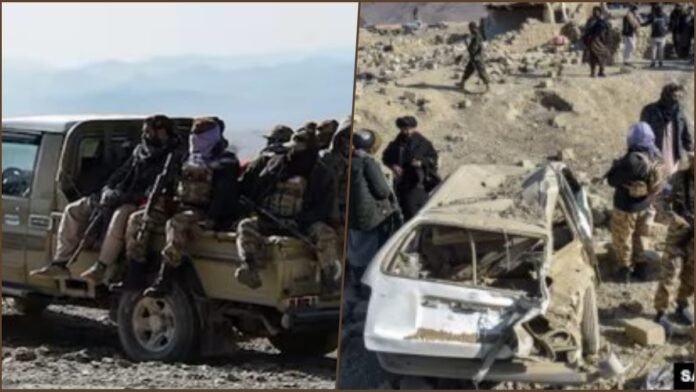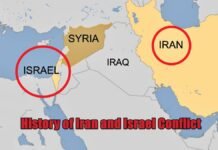
Key Points:
- Escalating Conflict: Violent border clashes between Afghanistan and Pakistan have resulted in eight Afghan fatalities and 13 injuries, including civilians, over the past few days.
- Airstrikes Trigger Retaliation: Pakistan’s airstrikes on Tehreek-e-Taliban Pakistan (TTP) bases in Afghanistan’s Paktika province escalated tensions, with the Taliban vowing revenge.
- Cross-Border Skirmishes: Terrorists, allegedly supported by the Afghan army, launched coordinated attacks on Pakistani border posts, leading to casualties on both sides.
- Heavy Losses: Pakistan’s retaliatory strikes inflicted severe damage on Afghan forces and militants, but one Pakistani soldier was killed, and 11 were injured.
- Rising Taliban Aggression: Reports suggest 15,000 Taliban fighters are mobilizing toward the Pakistan border, raising fears of a larger conflict.
Islamabad/Kabul: Tensions between Afghanistan and Pakistan have escalated into violent confrontations, with the once-quiet border regions now reverberating with the sounds of gunfire and bombings. In the latest round of hostilities, at least eight people on the Afghan side have been killed and 13 injured, including civilians, from Friday to Monday.
This flare-up follows Pakistan’s recent airstrikes on Tehreek-e-Taliban Pakistan (TTP) bases in Afghanistan’s eastern Paktika province, which the Taliban condemned as attacks on civilians. In response, Taliban forces have vowed retaliation, further intensifying cross-border skirmishes.
Friday’s Border Tension Turns Deadly
Pakistani security officials reported an attempted infiltration by TTP terrorists on Friday night. While the Pakistani army repelled the initial attempt, the attackers regrouped with the Afghan army on Saturday morning. They launched coordinated strikes on Pakistani border posts in areas such as Ghojgarhi, Matha Sangar, Kot Ragha, and Tari Mengal, using both light and heavy weaponry.
The Pakistani army retaliated, inflicting heavy losses on the Afghan attackers. However, one Frontier Corps soldier was killed, and 11 others sustained injuries in the intense exchanges.
Pakistan’s Airstrikes: A Precursor to the Violence
The latest hostilities follow Pakistan’s December 24 airstrikes targeting TTP hideouts in Afghanistan, which killed at least 46 people, including women and children. The strikes were part of Pakistan’s effort to curb rising TTP attacks, particularly in Khyber Pakhtunkhwa and Balochistan.
The Taliban’s Defense Ministry strongly condemned the airstrikes, labeling them as civilian attacks and pledging retaliation. The border clashes now appear to be part of this retaliatory campaign, with Afghan sources suggesting that 15,000 Taliban fighters are mobilizing toward the Pakistan border.
TTP’s Growing Threat in Pakistan
The Tehreek-e-Taliban Pakistan has escalated its operations in recent months, targeting Pakistani security forces. The group, which shares ideological ties with the Afghan Taliban, has reportedly found sanctuary across the border. Pakistan accuses the Afghan Taliban of harboring TTP militants, further straining relations between the two nations.
A Brewing Humanitarian Crisis
The ongoing conflict has raised concerns over civilian casualties and a potential humanitarian crisis in border regions. Local residents on both sides of the border have reported displacement due to the escalating violence, while international organizations have called for restraint.

Global Implications
The renewed hostilities threaten regional stability, with experts warning that the situation could spiral into a larger conflict if diplomatic interventions fail. Both nations face increasing international scrutiny, with calls for immediate negotiations to de-escalate tensions and prevent further bloodshed.
As the conflict intensifies, all eyes are on the border regions, where the next developments could shape the future of Afghanistan-Pakistan relations and the broader security landscape of South Asia.


















































